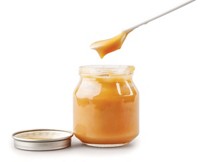Advertisement
Grab your lab coat. Let's get started
Welcome!
Welcome!
Create an account below to get 6 C&EN articles per month, receive newsletters and more - all free.
It seems this is your first time logging in online. Please enter the following information to continue.
As an ACS member you automatically get access to this site. All we need is few more details to create your reading experience.
Not you? Sign in with a different account.
Not you? Sign in with a different account.
ERROR 1
ERROR 1
ERROR 2
ERROR 2
ERROR 2
ERROR 2
ERROR 2
Password and Confirm password must match.
If you have an ACS member number, please enter it here so we can link this account to your membership. (optional)
ERROR 2
ACS values your privacy. By submitting your information, you are gaining access to C&EN and subscribing to our weekly newsletter. We use the information you provide to make your reading experience better, and we will never sell your data to third party members.
Environment
FDA Sets Limit For Arsenic In Apple Juice
by Britt E. Erickson
July 22, 2013
| A version of this story appeared in
Volume 91, Issue 29

FDA has proposed a threshold of 10 ppb for inorganic arsenic, the carcinogenic form of the element, in apple juice. This is the same level set by EPA for arsenic in drinking water. FDA determined the action level after working with EPA, NIH, and the Centers for Disease Control & Prevention to assess the potential risks from long-term exposure to arsenic. “The levels of inorganic arsenic in apple juice are too low to cause immediate or short-term health damage,” says Michael R. Taylor, FDA’s deputy commissioner for foods and veterinary medicine. FDA has been monitoring arsenic in apple juice for two decades but has not taken action until now. Last year, the agency reported arsenic levels in 94 samples of apple juice. Ninety-five percent of the samples had total arsenic levels below 10 ppb, and 100% of the samples had inorganic arsenic levels below 10 ppb. FDA’s move to set a limit comes two years after test results released by the television program “The Dr. Oz Show” and Consumer Reports magazine raised the public’s concerns about arsenic in juice. FDA was unable to reproduce those test results. The agency says it established the limit to provide guidance for industry.





Join the conversation
Contact the reporter
Submit a Letter to the Editor for publication
Engage with us on Twitter